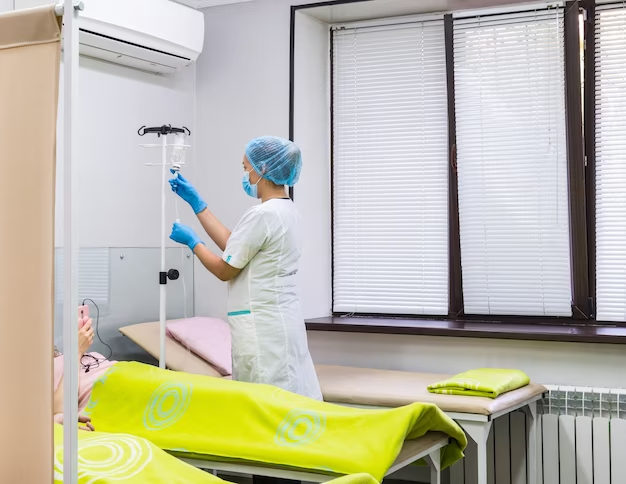Introduction
Hospitals are critical infrastructures that require a reliable and efficient heating, ventilation, and air conditioning (HVAC) system to provide optimal indoor air quality, temperature control, and comfort for patients, staff, and visitors. The unique needs of hospitals necessitate the use of specialized HVAC systems that meet stringent requirements for infection control, air filtration, energy efficiency, and zoning. In this article, we will explore the various types of HVAC systems commonly used in hospitals and their key features.
Variable Air Volume (VAV) System
VAV systems are popular in hospitals due to their ability to regulate air volume and temperature in different zones. VAV systems use variable speed fans and modulating dampers to deliver conditioned air based on individual zone requirements. This allows for precise temperature control, improved energy efficiency, and zoning flexibility, making VAV systems suitable for hospital environments where different areas may have varying cooling and heating needs.
Enhanced Energy Efficiency
One of the key advantages of VAV systems in hospitals is their ability to optimize energy consumption.VAV systems regulate the airflow to various zones within the hospital based on the specific cooling or heating requirements of each area.By adjusting the airflow and temperature in response to real-time conditions, VAV systems can significantly reduce energy wastage, resulting in lower utility bills and a smaller carbon footprint.
Improved Air Quality
Maintaining a healthy indoor environment is critical in a hospital setting.VAV systems play a vital role in achieving optimal air quality.These systems are equipped with advanced air filtration and purification mechanisms that efficiently remove airborne contaminants, such as bacteria, viruses, and allergens.By continuously monitoring and controlling air quality parameters, VAV systems contribute to a safer and healthier environment for patients, staff, and visitors.
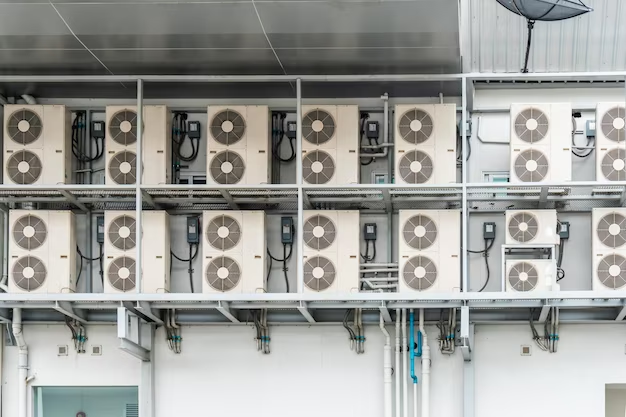
Individual Zone Control
Hospitals consist of diverse areas with varying ventilation requirements.VAV systems offer individual zone control, allowing precise adjustment of airflow and temperature in different spaces.This capability ensures that each zone within the hospital can maintain the desired comfort level, regardless of the overall conditions in the building.Individual temperature control also enables better infection control measures, as specific areas can be isolated or adjusted to meet the specific needs of patients or sterile environments.
Quiet and Comfortable Environment
Hospitalized patients require a calm and peaceful environment for faster recovery.VAV systems are designed to provide a quiet and comfortable indoor atmosphere.These systems utilize advanced sound attenuation techniques to minimize noise levels, ensuring a serene environment conducive to healing and rest.By modulating the air volume and velocity, VAV systems maintain consistent airflow and temperature, avoiding drafts and creating a pleasant environment for patients and healthcare providers.
Operational Efficiency
In addition to benefiting patients and occupants, VAV systems offer operational advantages for hospital administrators and facility managers.The centralized control and monitoring capabilities of VAV systems simplify HVAC system management.Real-time data and analytics allow for proactive maintenance, quick troubleshooting, and optimization of energy consumption.These systems can also be integrated with building automation systems, enabling seamless coordination with other hospital systems, such as lighting and occupancy sensors.
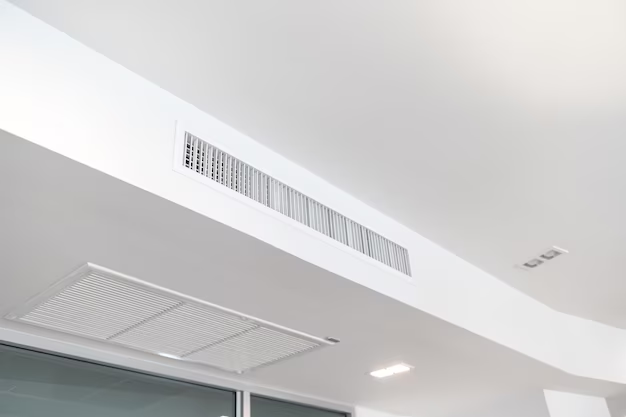
Dedicated Outdoor Air System (DOAS)
DOAS is designed to deliver fresh outdoor air to a building while decoupling the ventilation process from the cooling and heating functions. In hospitals, DOAS plays a crucial role in maintaining indoor air quality by providing a constant supply of clean, filtered air. DOAS systems use energy recovery techniques to enhance efficiency and may incorporate additional features such as heat recovery ventilation and humidity control to create a healthier environment for patients and staff.
Fresh Outdoor Air Supply
Maintaining a constant supply of fresh outdoor air is vital in hospitals to support healthy indoor environments.DOAS ensures a continuous and controlled intake of outdoor air into the building. The system uses separate ventilation units to condition and filter the outdoor air before distributing it throughout the facility.By delivering fresh air directly to the occupied spaces, DOAS reduces the reliance on recirculated air, minimizing the risk of airborne contaminants and providing a healthier environment for patients, healthcare providers, and visitors.
Improved Indoor Air Quality
Hospitals require strict adherence to high indoor air quality standards to prevent the spread of infections and promote healing.DOAS systems employ advanced filtration and purification techniques to remove pollutants, allergens, and microorganisms from the incoming outdoor air. By removing contaminants at the source and supplying clean air to the occupied spaces, DOAS contributes to a safer and healthier indoor environment, reducing the risk of airborne transmission of diseases and improving patient outcomes.
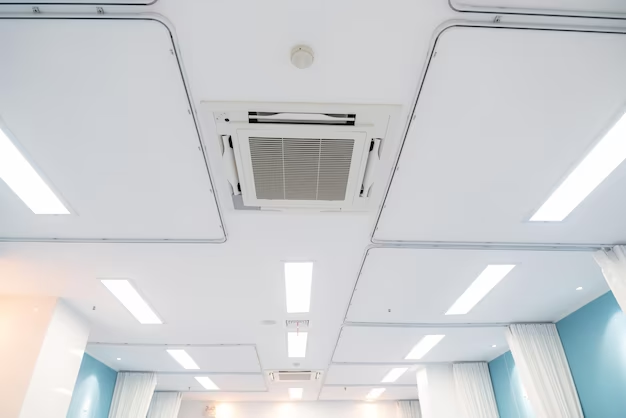
Humidity and Temperature Control
Hospitals often require precise control over humidity and temperature levels to ensure patient comfort and support critical processes.DOAS systems incorporate separate cooling and dehumidification units to control these parameters independently.This setup allows for effective humidity control, preventing excess moisture that can lead to mold growth and bacterial proliferation.By maintaining optimal humidity and temperature conditions, DOAS enhances patient comfort and promotes a conducive environment for healing.
Energy Efficiency
DOAS systems are designed with energy efficiency in mind.By separating the processes of outdoor air ventilation and indoor conditioning, these systems optimize energy usage.DOAS units utilize energy recovery technologies, such as heat exchangers, to pre-condition the outdoor air by transferring heat or cooling from the exhaust air.This heat exchange process significantly reduces the energy required for conditioning the incoming air, resulting in lower energy consumption and operational costs for hospitals.
Flexible Zoning and Demand Control
Hospitals consist of diverse areas with varying occupancy and ventilation requirements.DOAS systems offer flexible zoning capabilities, allowing customized ventilation rates for different spaces based on their occupancy levels and specific needs.Additionally, DOAS can be integrated with demand control strategies that adjust ventilation rates dynamically based on real-time occupancy data.This dynamic control optimizes energy usage by providing ventilation only when and where it is needed, further enhancing the energy efficiency of the system.
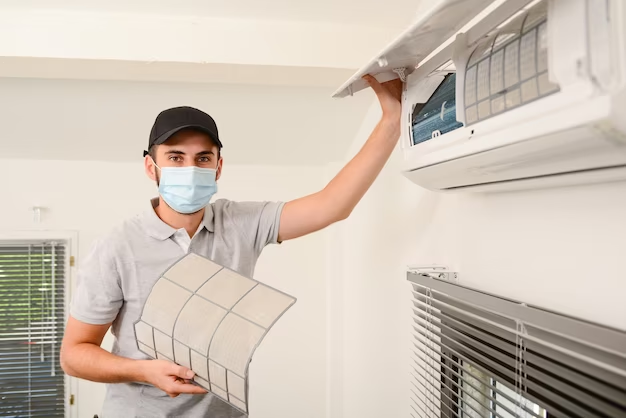
Chilled Water System
Chilled water systems are commonly employed in hospitals to handle cooling demands efficiently. These systems utilize a central chiller plant that cools water, which is then circulated through a network of pipes to air handling units (AHUs) or fan coil units (FCUs) located throughout the building. The chilled water absorbs heat from the air, providing cooling, while the cooled air is distributed to various zones. Chilled water systems offer excellent temperature control and are often integrated with VAV systems to optimize energy usage and adapt to varying load conditions.
Temperature Control
Hospitals require precise temperature control to create a comfortable environment for patients, staff, and visitors.A reliable chilled water system helps regulate temperatures in different areas, such as patient rooms, operating theaters, and laboratories, ensuring optimal conditions for medical procedures, equipment performance, and patient recovery.
Humidity Management
Maintaining appropriate humidity levels is essential for infection control, medication storage, and the prevention of mold growth.A chilled water system, coupled with appropriate humidification and dehumidification mechanisms, helps manage humidity levels effectively, reducing the risk of healthcare-associated infections and ensuring the integrity of medical supplies.
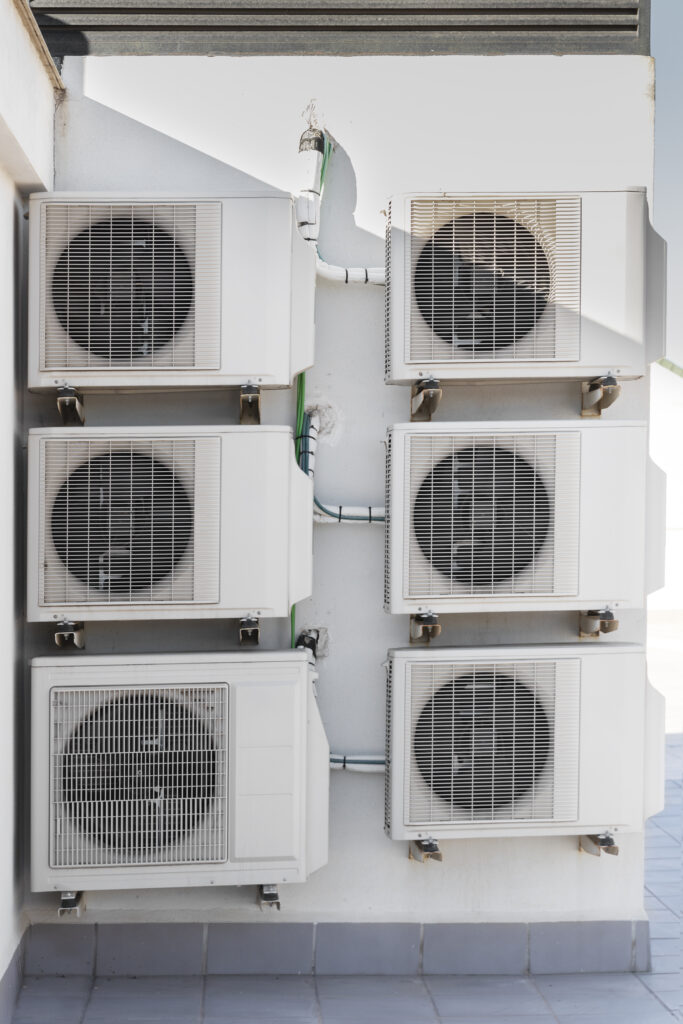
Heat Recovery Ventilation (HRV) System
HRV systems recover and utilize waste heat from exhaust air to precondition incoming fresh air, reducing the overall energy consumption of the HVAC system. In hospitals, where maintaining a sterile environment is crucial, HRV systems help improve energy efficiency without compromising indoor air quality. The recovered heat can be used for heating or preheating purposes, reducing the load on primary heating systems and minimizing energy wastage.
Indoor Air Quality (IAQ) Enhancement
Hospitals require excellent indoor air quality to safeguard the health and well-being of occupants. HRV systems efficiently remove contaminants, such as airborne bacteria, viruses, allergens, and odors, while supplying fresh outdoor air.This process reduces the risk of airborne infections, improves respiratory health, and enhances the overall comfort of patients and staff.
Energy Efficiency Improvement
Hospitals are energy-intensive facilities, and reducing energy consumption is crucial for cost savings and environmental sustainability.HRV systems recover and transfer heat from exhaust air to incoming fresh air, reducing the load on heating and cooling systems.This heat exchange process helps conserve energy and minimize the hospital’s carbon footprint.
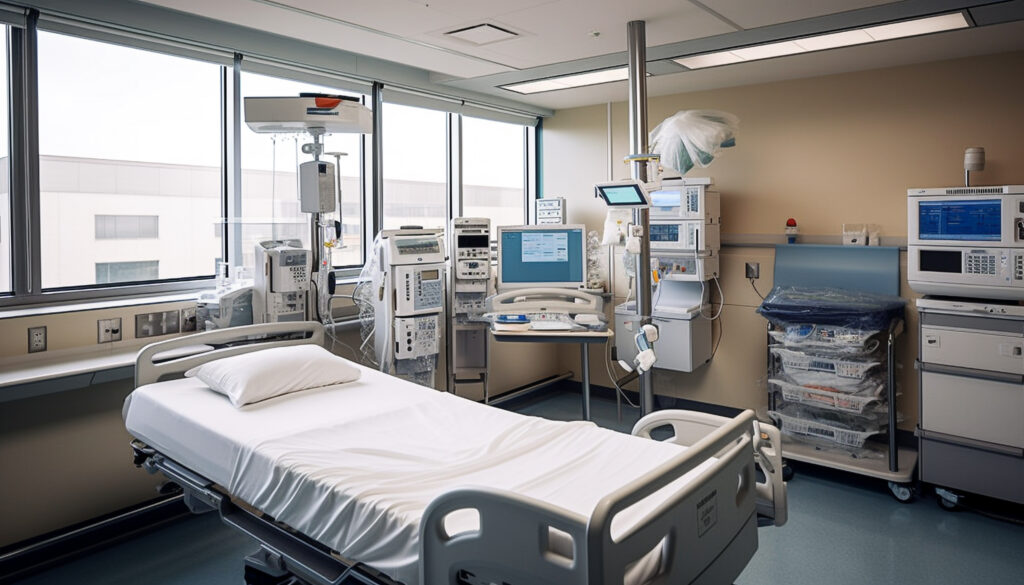
Fan Coil Unit (FCU) System
FCU systems are versatile and commonly employed in hospital settings, particularly in individual rooms or smaller areas. These systems consist of compact fan coil units installed in the ceiling or floor, which provide both cooling and heating capabilities. FCUs are known for their quiet operation, localized temperature control, and ease of installation and maintenance. They are suitable for areas where zoning and individual comfort requirements are essential, such as patient rooms, surgical suites, and laboratories.
Precise Temperature Control
Hospitals require precise temperature control in various areas such as patient rooms, waiting areas, and operating theaters.FCU systems offer individual temperature control, allowing occupants to adjust the settings according to their comfort needs. This personalized temperature control enhances patient satisfaction and promotes a healing environment.
Air Distribution Flexibility
FCU systems provide flexibility in air distribution, allowing hospitals to prioritize areas with different cooling or heating requirements. They can be installed in specific zones or individual rooms, enabling precise control and temperature adjustments based on occupancy and functional needs.
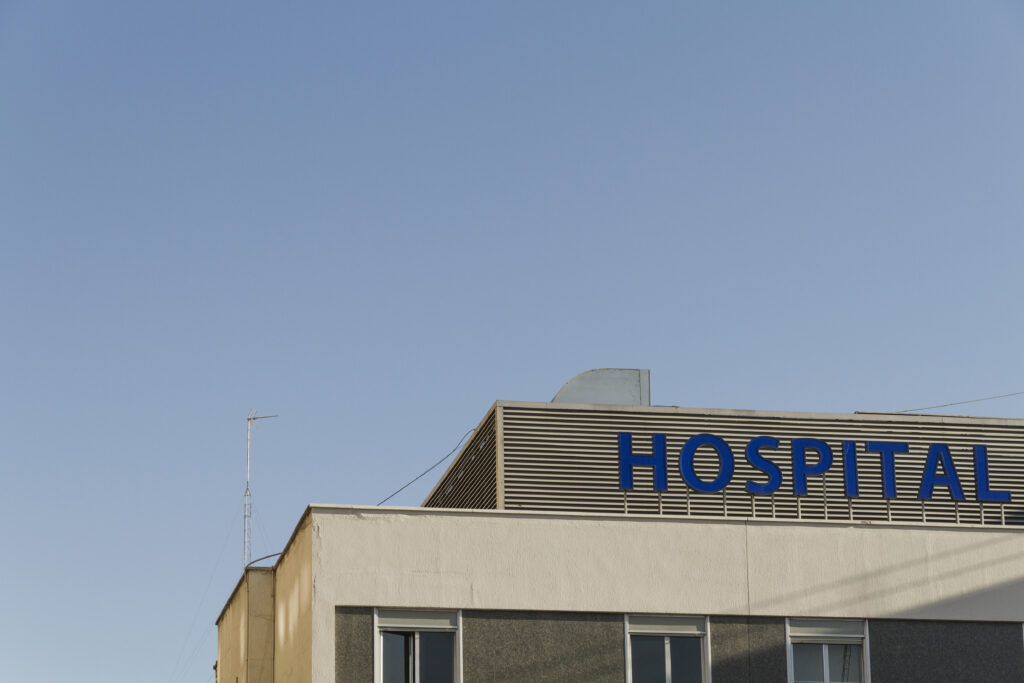
Conclusion
Hospitals require specialized HVAC systems to meet the unique challenges of maintaining indoor air quality, infection control, and comfort. Variable Air Volume, Dedicated Outdoor Air, Chilled Water, Heat Recovery Ventilation, and Fan Coil Unit systems are among the commonly used HVAC systems in hospitals. The selection of the appropriate system depends on factors such as the hospital’s size, layout, zoning requirements, energy efficiency goals, and the need for infection control measures. By employing these advanced HVAC systems, hospitals can create a safe and comfortable environment that promotes healing, recovery, and well-being for patients, staff, and visitors.
Why Choose Us?

CNMEDITECH is dedicated to the long-term research of the medical equipment market. Our mission is “People oriented and win-win strategy,Matching the real needs of the region with a focus on human health,To be the world’s first-class medical field solution expert”.We have been manufacturing high-quality medical device products for more than ten years.
We have built our reputation on delivering quality healthcare solutions on time and on budget.All our products comply with international health and safety regulations and all products come with a warranty.
Are you still worrying about your customer’s product needs?Are you still angry that the product is expensive? We have various medical equipment and support personalized product customization.
Our company has many styles to choose from.In addition, we have high-quality pre-sales consulting guidance and professional after-sales service, all to meet your needs.
Whether it is a cost-effective or high-end product, there will always be something suitable for you.If you have any needs for products, you can ask us, our factory will meet your needs as soon as possible, and we will make every effort to provide you with solutions.Feel free to send us your inquiries.

